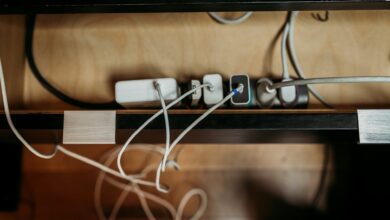The Secrets of Effective HEPA Filter Installation and Maintenance in Cleanrooms

Introduction to Cleanroom Air Quality
Cleanrooms are specialized environments pivotal in many industries where minimal contamination can be catastrophic. Whether manufacturing microchips or developing pharmaceuticals, maintaining superior air quality is a shared necessity. Cleanrooms are designed to limit air impurities to protect the processes and products. Implementing HEPA filters is central to achieving this high standard, which ensures that these linkhouse specialized environments remain uncontaminated and operational 24/7.
One critical task in maintaining cleanrooms is proper HEPA filter installation. HEPA filters are adept at capturing at least 99.97% of all airborne particulates larger than 0.3 microns, effectively eliminating harmful contaminants and maintaining an immaculate environment. The drive for cleaner air within these spaces continues as industries strive for product quality and safety excellence.
Understanding HEPA Filters
High-efficiency particulate air (HEPA) filters are a technology solution developed to address the need for cleaner air. These filters are not just ordinary filtration systems; they are designed to catch minuscule particles that standard filters would typically miss. As the Environmental Protection Agency outlines, HEPA filters are preferred for their ability to employ three mechanisms—interception, impaction, and diffusion—making them exceptionally effective for removing pollutants such as dust, pollen, mold, bacteria, and even virus particles from the air.
The fibers within a HEPA filter collect particles as they pass through, ensuring the air leaving the filter is virtually contaminant-free. As such, HEPA filters benefit not just industrial applications; households now employ them in air purifiers to improve indoor air quality significantly. To maximize their effectiveness, it’s essential to rely on trusted HEPA filter installation, CAprofessionals who ensure proper setup and maintenance. This expert approach guarantees long-term performance and peace of mind.
Why HEPA Filters Matter in Cleanrooms
The importance of HEPA filters in maintaining cleanroom environments cannot be overstated. Airborne particles can severely impact product quality, leading to waste, recalls, and even threats to human health regarding medicinal products. In industries like biotechnology and electronics, the presence of even a single particle can spell disaster for an entire production batch. Thus, the role of HEPA filters is critical in preventing this kind of contamination, ensuring that industrial and medical processes continue unhindered.
The right HEPA filter system can meet and exceed industry standards, ensuring that the cleanroom’s atmosphere remains controlled and regulatory compliant. This fosters innovation and productivity without the risk of potential contamination.
Key Steps in HEPA Filter Installation
Successful HEPA filter installation begins with a comprehensive assessment of the cleanroom’s needs. Determining the required airflow, understanding spatial constraints, and selecting the correct filters are all initial steps that set the tone for a successful setup. The following steps are of paramount importance to ensure that the filters function at their maximum potential:
- Choosing the appropriate filter size that fits the infrastructure of the cleanroom and meets filtration needs.
- Ensuring the cleanroom is sealed effectively to optimize filtration efficiency, paying attention to potential leak sources around doors and infrastructure joins.
- Proper sealing techniques should be implemented during the installation to prevent any potential air leakage that could reduce the filter’s effectiveness.
- Ensuring that post-installation tests are conducted rigorously to verify that all filters are operational and meet required standards.
These steps provide the foundation for a filter system that meets current demands and future expansions in cleanroom operations.
Common Installation Mistakes to Avoid
Even with diligent planning, there are common pitfalls in HEPA filter installation that can compromise a cleanroom’s efficiency. Incorrect filter choices, such as selecting the wrong size or ratings, are among these potential mistakes. Additionally, neglecting the sealing and installation procedures can lead to air leaks, undermining air quality controls. Furthermore, skipping post-installation testing can leave undetected inefficiencies within the system.
Addressing these issues includes double-checking all specifications, ensuring installation adheres to industry standards, and integrating a comprehensive testing phase to catch and correct errors promptly.
HEPA Filter Maintenance Best Practices
The longevity and effectiveness of HEPA filters hinge significantly on a sound maintenance schedule. Regular inspections are vital to ensure these filters operate correctly and efficiently. A consistent maintenance routine might involve cleaning or replacing the filters as necessary and testing them to confirm they maintain peak performance.
An effective strategy incorporates monitoring the differential pressure across filters, which serves as an excellent indicator of their condition. When properly maintained, HEPA filters ensure air quality and extend operational life, safeguarding investments in cleanroom infrastructure.
The Role of Technology in Filter Management
Technological advancements are reshaping how cleanrooms are maintained, with innovative solutions leading the charge in monitoring and managing air quality. Systems that integrate IoT technology are becoming increasingly available, offering real-time insights into air filter conditions. These platforms allow for more predictive maintenance rather than reactive, reducing operational downtime and improving filter efficiency.
Industry resources such as ASHRAE’s guide on filtration technology document new developments extensively. These resources present a future where cleanroom operations are streamlined and effectively managed using cutting-edge tools.
Conclusion: Ensuring Optimal Air Quality
As the backbone of cleanroom efficiency, HEPA filters shoulder the burden of maintaining pristine air conditions. With proper installation, committed maintenance, and leveraging emerging technologies, these filters protect sensitive processes against contaminants, setting the stage for successful operations across numerous sectors.
Industries ensure their environments meet current demands by understanding and executing the best practices for HEPA filter systems. They are also prepared for future challenges, paving the way for safer, cleaner operational standards.



